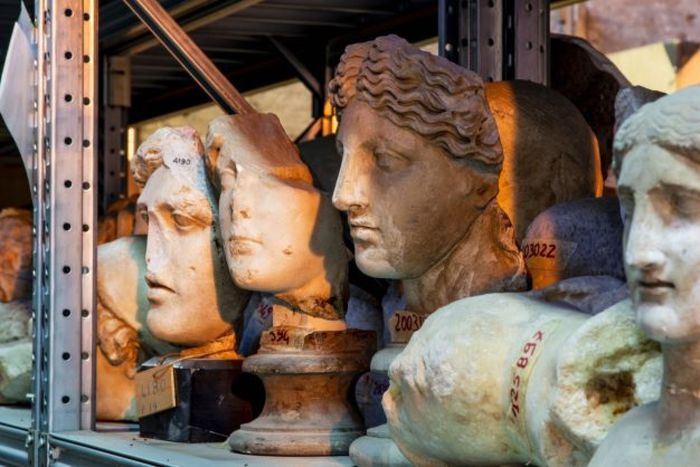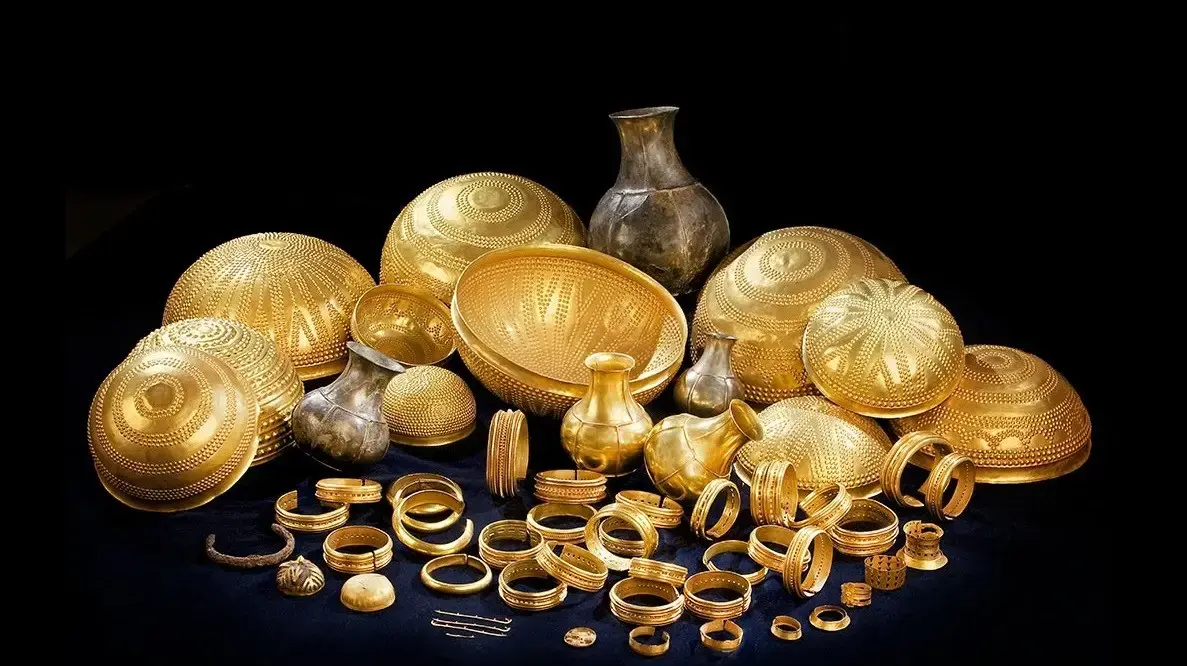ROME - '' In the months of closure due to the pandemic we worked as archaeologists in the museum's deposits.
We managed to identify many masterpieces that had been granted for exhibitions and then remained in the coffers and others completely forgotten ''. Sthépane Verger, director of the National Roman Museum, tells of the hidden work that during the lockdown engaged the staff of the four locations of the prestigious exhibition structure - Palazzo Massimo, Terme di Diocleziano, Crypta Balbi and Palazzo Altemps - caskets of masterpieces that tell the glory of Urbe through collections of the highest value but also a mine of treasures preserved in the shadows that deserve to be valued. '' In recent months - says Verger to ANSA - we have concentrated on many projects, in particular for the Crypta Balbi, known for the collections of the High Middle Ages but the museum is one tenth of theentire surface and then we began the work to make it safe ''. For Crypta Balbi the interventions of the 'Urbs. From the city to the Roman countryside 'funded by the National Research Council which will be built together with the Appia Antica Archaeological Park. '' This is a great design work by the technical office of the National Roman Museum - he explains - also because they have started a complete survey of the Crypta that did not exist. The restoration laboratory then worked on the ordinary maintenance of the works, those in the exhibition halls of Palazzo Massimo and those kept in the warehouses, identifying which ones needed interventions ''.Urbs. From the city to the Roman countryside 'funded by the National Research Council which will be built together with the Appia Antica Archaeological Park. '' This is a great design work by the technical office of the National Roman Museum - he explains - also because they have started a complete survey of the Crypta that did not exist. The restoration laboratory then worked on the ordinary maintenance of the works, those in the exhibition halls of Palazzo Massimo and those kept in the warehouses, identifying which ones needed interventions ''.Urbs. From the city to the Roman countryside 'funded by the National Research Council which will be built together with the Appia Antica Archaeological Park. '' This is a great design work by the technical office of the National Roman Museum - he explains - also because they have started a complete survey of the Crypta that did not exist. The restoration laboratory then worked on the ordinary maintenance of the works, those in the exhibition halls of Palazzo Massimo and those kept in the warehouses, identifying which ones needed interventions ''.technical office of the National Roman Museum - he explains - also because they started a complete survey of the Crypta that did not exist. The restoration laboratory then worked on the ordinary maintenance of the works, those in the exhibition halls of Palazzo Massimo and those kept in the warehouses, identifying which ones needed interventions ''.technical office of the National Roman Museum - he explains - also because they started a complete survey of the Crypta that did not exist. The restoration laboratory then worked on the ordinary maintenance of the works, those in the exhibition halls of Palazzo Massimo and those kept in the warehouses, identifying which ones needed interventions ''.
'' We have been archaeologists - adds the director - both for the statues and for important archaeological contexts, such as that of the orientalizing necropolises of the eighth-seventh century BC of Castel di Decima and Laurentina, two very large necropolises that allow us to reconstruct society Lazio of that era, immediately after the foundation of Rome, with tombs and a lot of material imported from Greece ''. Also in this case, finds dating back to the excavations of the Eighties were made safe, the blocks of the tombs that had been brought to the museum were relocated and cleaned. Now it will be possible to proceed with new scientific excavations, perhaps with the contribution of foreign universities and institutes in Rome.
'' The four locations of the National Museum, Verger anticipates - will host at the beginning of next year the great exhibition 'Stories of Rome' which will tell the city starting from small archaeological events, from prehistory to today, in a global analysis because and the interventions do not concern only the ancient but the entire chronology of the city ''. Gradually we will begin to review all the routes of the museums and create new ones, starting with Palazzo Altemps. Here we will focus on the didactic aspect, on the palace, on modern collections such as the Ludovisi, and on the great ancient Roman collections of Greek sculpture. '' In recent months, for example, - observes Verger - we have taken into consideration a fantastic, almost unique context,of sculptures dated late second century-early first century by Fianello Sabino, in the province of Rieti, a collection that certainly comes from an aristocratic villa in the area that show all types of sculpture imported from Delos or Athens, an expression of the Hellenistic culture of the elite Roman and Lazio of the end of the Republic. It is practically the first known collection of Greek statues in Rome. This too will be presented in the exhibition ''.This too will be presented in the exhibition ''.This too will be presented in the exhibition ''.
As for the widespread and now recurring tendency to propose exhibitions focused on the comparison between ancient and modern, Verger has clear ideas: '' Dialogue is only useful if it is useful. We need to see what kind of relationship we have with antiquity. It can be scientific, or poetic or artistic. So, rather than dialogue, we must speak of looking at ancient times from different points of view ''. In recent weeks, the director has been struck by the social inclusion project entitled 'Museum for all' aimed at people with intellectual disabilities created in 18 Italian cultural sites by the museum's educational service with the Associazione L 'Abilità, with the support of the De Agostini Foundation. '' It is a beautiful initiative - he points out -.For the National Roman Museum we have developed the guides of our four locations for small and large visitors with this type of problem. It is an important tool that will serve us to set up the work on the new paths, which must be accessible to all. These guides will form the basis of the new concept of exhibition itineraries ''. (HANDLE).







